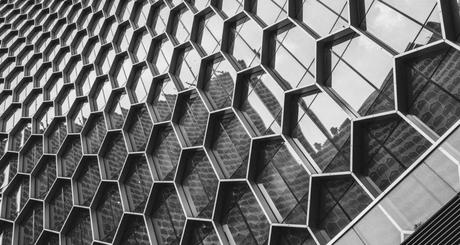
For many years aluminum was thought to be a rare element in the earth's crust. Then, in 1886, Paul Herout and C.M. Hall discovered a new way to smelt the ore in order to isolate the aluminum in it and it suddenly became much easier to obtain. Today, scientists know that aluminum is the third most abundant element on the periodic table of elements. It is also the single most abundant metal in the world.
The density of aluminum is 2.7 grams per milliliter as opposed to the density of water at 1 gram per milliliter, so aluminum definitely will not float - popular misconceptions to the contrary notwithstanding. However, it is very light, so much so that it is commonly used in airplanes where weight is a real concern. In fact, aluminum can make up as much as 75% of an airplane's construction, making it one-way technology has improved the way people fly.
Common Uses For Aluminum
There are many uses for aluminum, so many it can be difficult to list them all. The easiest way to talk about it is by category rather than any specific item.
Household Uses For Aluminum
Aluminum has a wide range of uses around the house. Window frames are commonly made from it, as well as doorknobs, most utensils, as well as many kettles and saucepans. Refrigerators and toasters have a great deal of aluminum in their construction as do coffee pots and dishwashers. Folding chairs have aluminum frames and aluminum foil (sometimes known as tin foil) is made of it too.
Household fittings, bicycles, containers for canned foods, baseball bats, watches, tennis rackets, and even some golf clubs are all made with aluminum, either in whole or in part. The gutters around your roof are made of aluminum too. Don't forget the curtain rods over your windows; they're also aluminum.
Aluminum In Packaging
Aluminum is also a common part of many kinds of packaging. Foils were already mentioned, also bottle caps, thermos, storage boxes, and utensil lids. Aluminum is widely used in food preparation items because it doesn't alter the taste of food kept in it, it protects food from the elements, it doesn't rust, and it has no toxic elements in it.
If your children like juice packages, chances are the juice pouches have an aluminum lining to keep the juice fresh because it provides a near-perfect barrier to keep out oxygen that can cause oxidization in the drink. Potato chips bags are also lined with aluminum for the same reason.
Aluminum In Computers
If you're reading this article you're probably using a computerized device; smartphone, laptop, desktop PC, etc. Aluminum is widely used in all of them due to its low weight and cooling properties. There are a lot of ways to lower CPU usage on computers, but it requires a heat sink made of aluminum to keep it cool enough not overheat and suffer a (literal) meltdown.
Aluminum is also used in computer cases and hard drive cases. In addition to its light weight, it is also non-magnetic, an essential requirement for use around hard drives. In fact, that's one of the easiest ways to tell the difference between stainless steel and aluminum. Put a magnet on something. If it doesn't stick, it's aluminum.
Aluminum In Construction
Aluminum is used in construction for all sorts of things. It can be used for bridges between buildings or floors, ladders, skylights, railings, and shutters. Tear open the walls of any business building and you'll find aluminum tubing, pipes, wiring, support rods, and more.
Large roof structures such as sky bridges and domes in stadiums and sports complexes use massive quantities of aluminum. It can be cut, bonded, welded, and joined with other materials. It's shiny, rust-resistant appearance makes it a natural choice for building exteriors where maintenance will be irregular or difficult.
Aluminum In Transportation
In addition to airplanes, aluminum is often used in trains, boats, and motor vehicles of all kinds. Car parts made from it include engine blocks, wheels, transmission housings, ornaments, brackets, fan clutch parts, alternator housings, spacer bars, mirrors, and suspension components. A full listing of all the car parts made from aluminum, either wholly or in part, would run several pages in length.
Aluminum In Electricity
Finally, aluminum is also often used in lieu of copper in many long distance power lines. It doesn't transmit electricity as well as copper, but its low density and cost make it a suitable replacement with only a minimal loss of electrical transmission.
